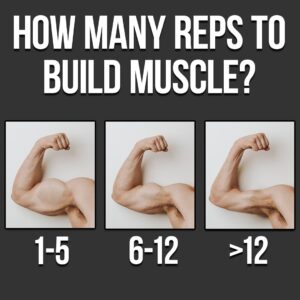Is it better to do low reps, medium reps, or high reps for muscle building?
If you talk to a strength athlete like a powerlifter, strongman, or weightlifter, you’ll be told that you gotta hit low reps to build thick muscles.
In contrast, if you talk to most bodybuilders, you’ll hear about higher reps being best to develop a dense muscle.
So which rep range is actually best for building muscle?
In most training textbooks and magazines you’ll see a continuum for reps where on one side you have strength, on the other side you have endurance, and smack dab in the middle we have hypertrophy.
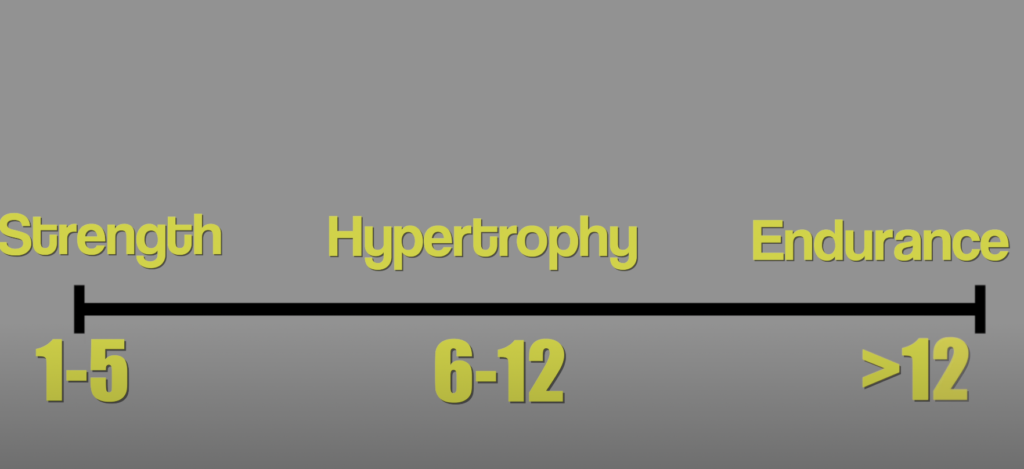
From this, people often split up reps as:
1-5 for strength
6-12 for hypertrophy
And >12 for endurance.
While that sounds nice and simple, it’s actually quite wrong, and not in line with current research.
The Research
When we look at different rep ranges, it’s common for people to think that there is this relatively distinct change in results.
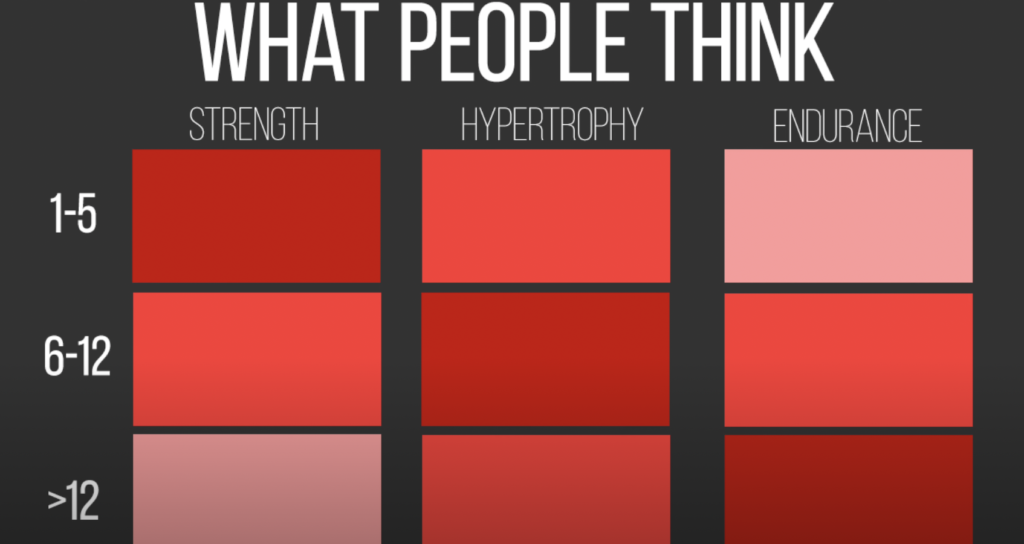
Low reps, such as 1-5 give you strength
Medium reps, such as 6-12 give you hypertrophy
And high reps, essentially over 12, gives you endurance.
However, this line of reasoning is outdated. Instead, our current research shows us it looks more like this:
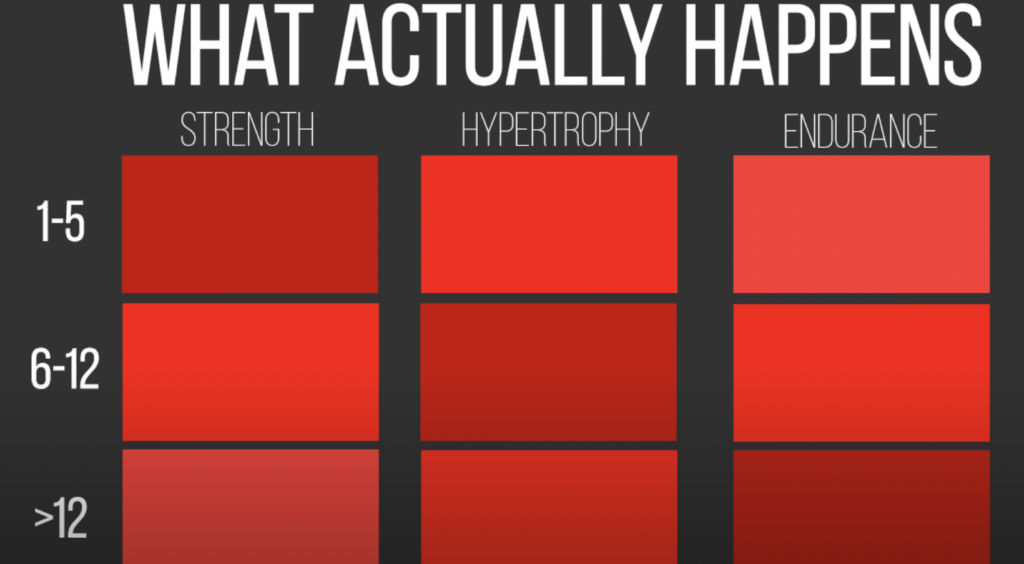
As you can see, there is a lot more overlap than most people think. In general, it appears that we can have a relatively similar effect for hypertrophy in most rep ranges. However, there are a few different considerations that we should discuss as they’re quite critical in this conversation.
1. Proximity to Failure
In our global body of research on muscle growth, we’ve seen that how close someone is to failure is quite important to muscle growth. Generally this means that you need to be reasonably challenged in your set for it to really stimulate muscle growth.
This is particularly true in cases of using lighter weights because we need to create a sufficient level of tension and challenge for the muscle to grow.
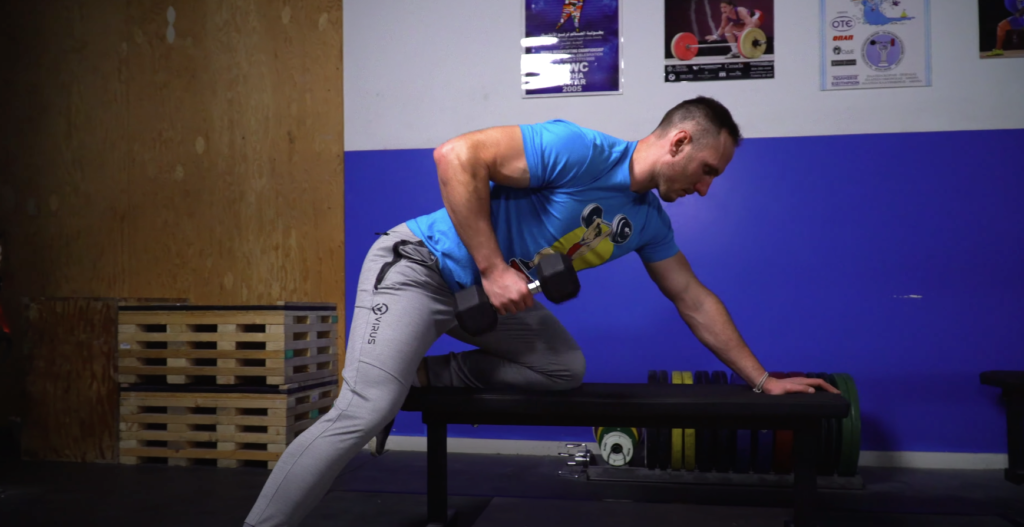
Using a rule of thumb of aiming to be at least within 5 reps of failure for hypertrophy focused work is helpful, particularly on isolation exercises.
This general outline is helpful. When we consider the research on a spectrum of reps being relatively equal for muscle growth, we can begin to apply it practically to different exercises.
You see, not all exercises feel the same with the same reps.
For instance, doing a set of 12 reps on deadlifts is soul crushing

In contrast, doing a set of 12 reps on curls feels pretty comfortable.
We can usually shy towards the lower end of numbers for larger compound movements. For more smaller isolation type movements, stick more towards the higher end.

One more quick note on intensity before we move on: We do see that extremely low weight, high rep sets don’t seem to provide as much benefit. There’s been a recommended cut off of at least 30% of 1 Rep max in the research body for hypertrophy. Most people wouldn’t naturally use this light of a weight, so it’s not that much of a concern, but we did want to clarify before moving on.
2. Volume
When it comes to building muscle, volume is huge.
If we look at the relationship between hypertrophy and volume, we see that generally more volume, will result in more muscle growth
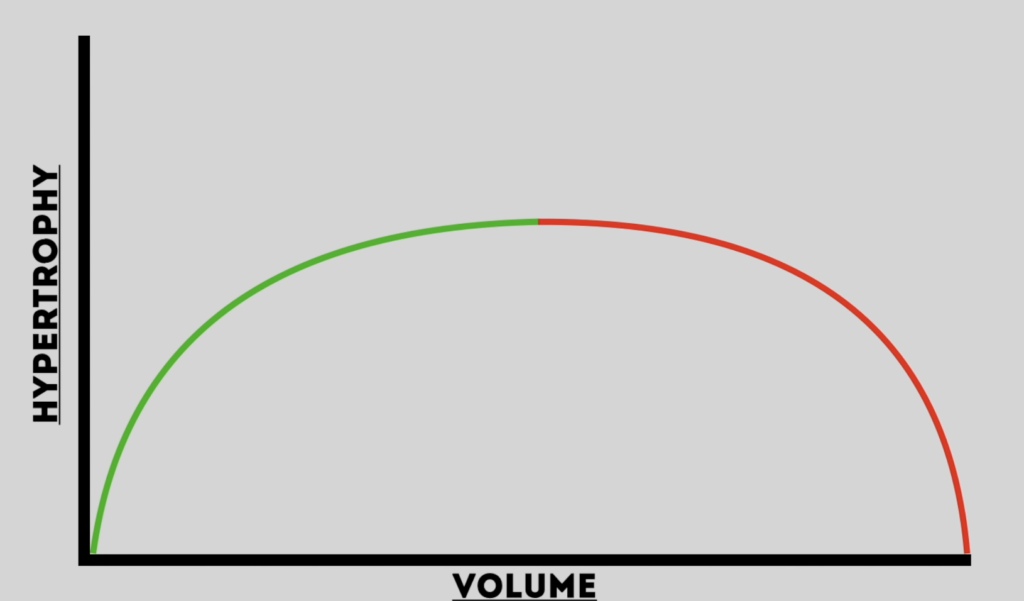
You can do too much, either in one session, or in a week, and see muscle growth go down, but that’s a topic for another day.
What we see is that generally lower, medium or higher rep sets are relatively equal, from a stimulus stand point for hypertrophy.
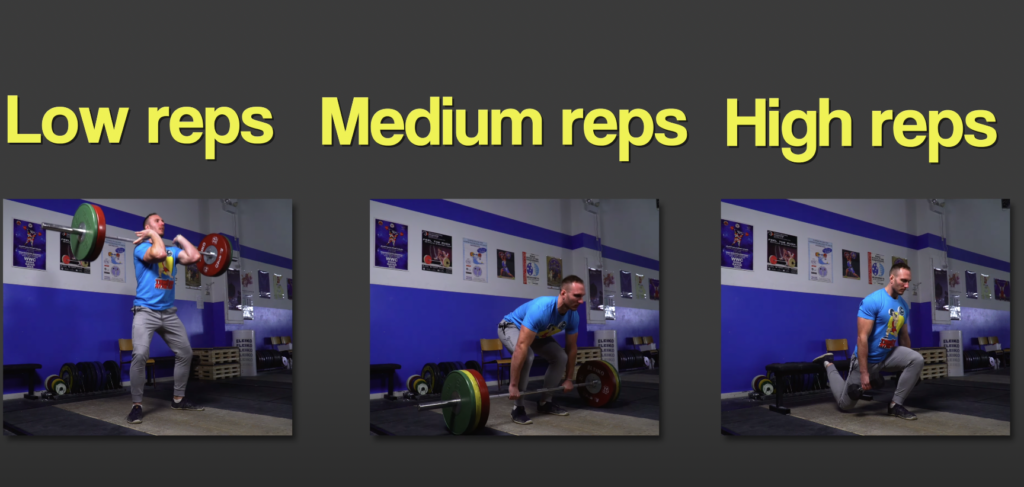
It’s really about how many total sets you get done. For instance, doing 6 sets across the week for squats will result in more hypertrophy than 3 sets, as long as both are at the same effort level.
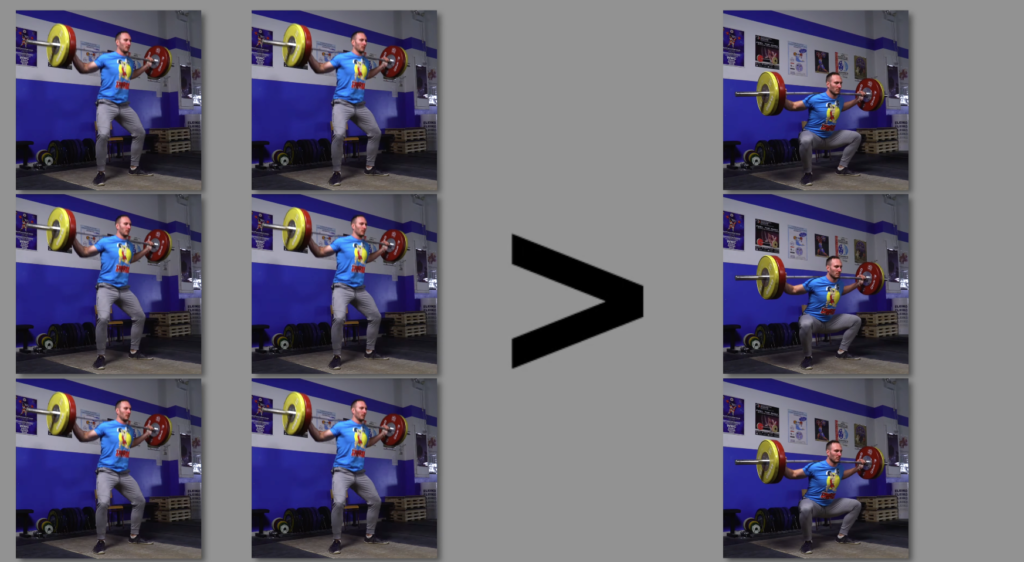
This is important to factor in as it can be really hard to do super low reps or super high reps for a lot of sets, particularly closer to failure.
Doing singles, doubles, or triples at an appreciable load is not something you’re going to see someone generally do for 10-20 sets in a movement in a week and often requires more rest repeat.
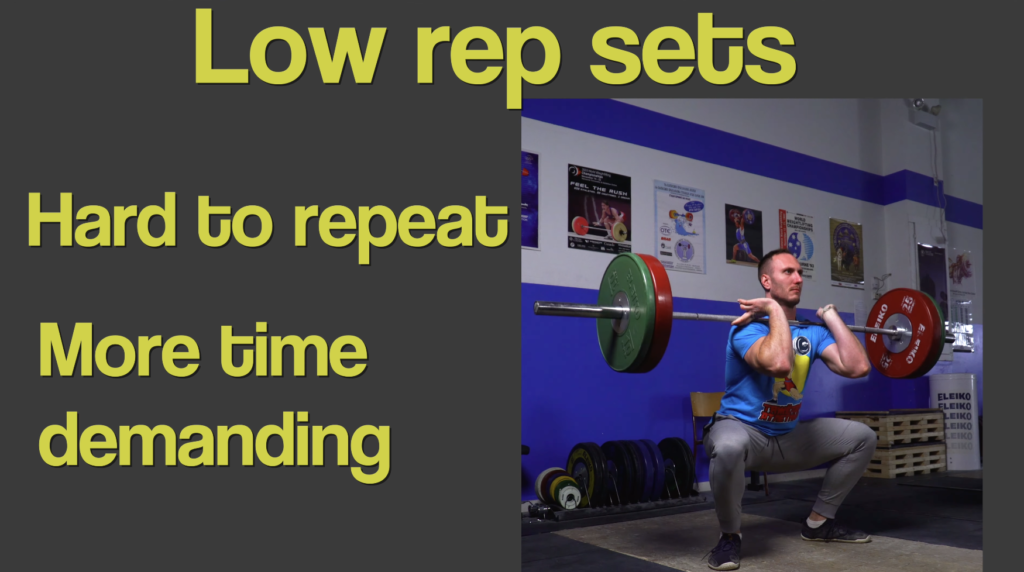
Similarly, trying to do 15+ rep sets close to failure can brutal and having to repeat that for a ton of sets will likely get very sloppy, losing technical proficiency, decreasing the goal stimulus, and possibly increase risk of injury.
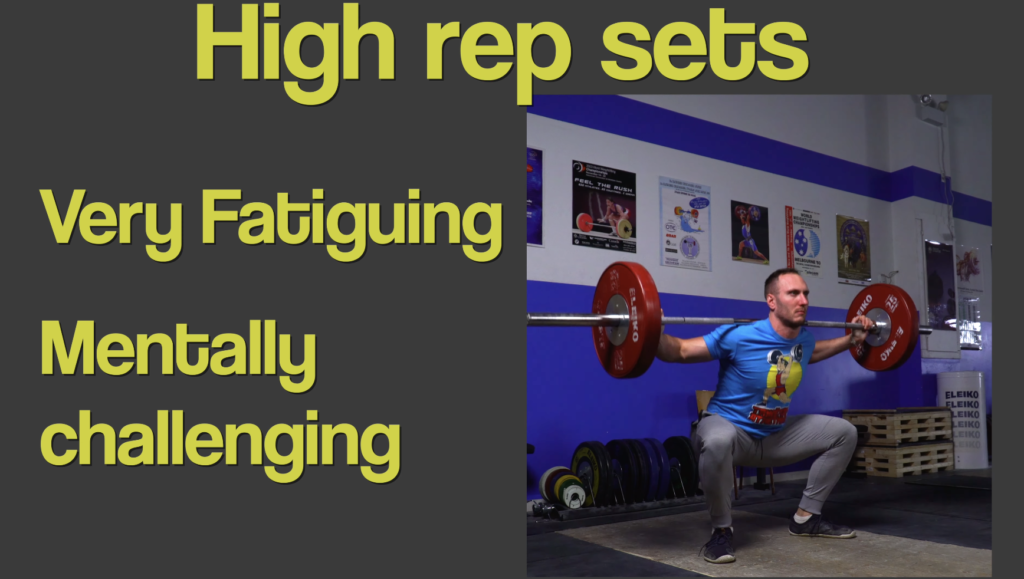
As such, you’ll likely need to pick a rep range which matches the movement, and repeatability to maximize your volume.
3. Variation/ Undulation
We just discussed how we see sets of 5 reps, 10 reps, and 15 reps all provide a similar amount of stimulus for hypertrophy and that it should just be more about total number of hard sets.
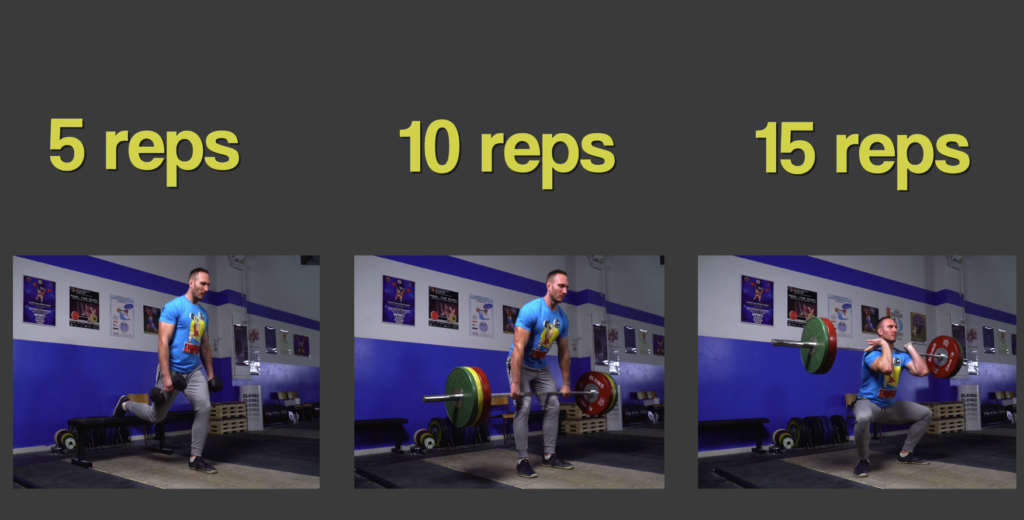
And while that’s true, and should be a focus point, we do see research that suggests having varying set and rep schemes within a program be beneficial.
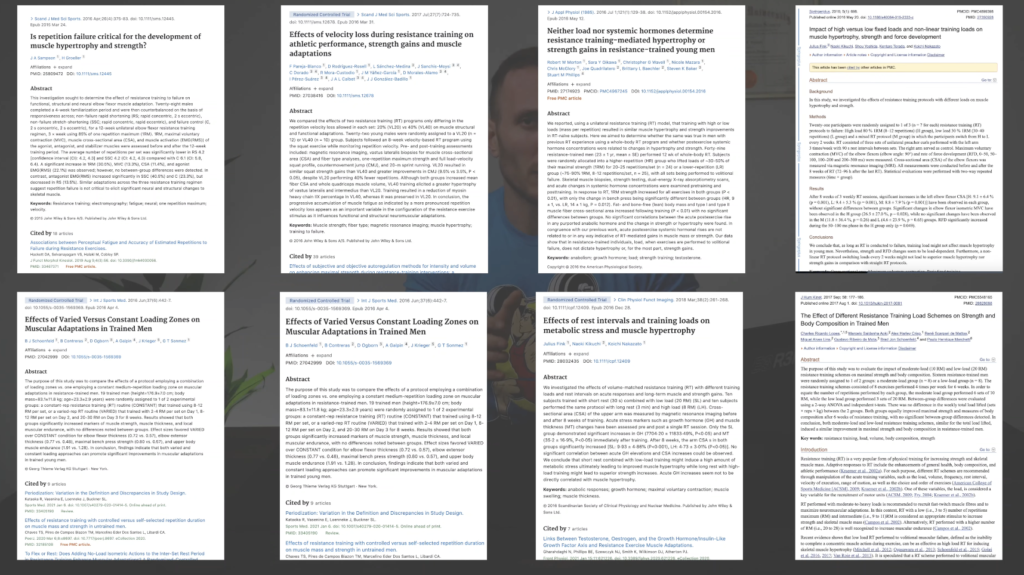
There are various terms used for this, but the most known is DUP or Daily Undulating Periodization. This means having different rep sets on different days of the week for training.
For example, on day 1 doing squats for 3 sets of 6 reps
On day 2 doing deadlifts for 3 sets of 4 reps
And on day 3 doing belt squat for 3 sets of 10 reps.
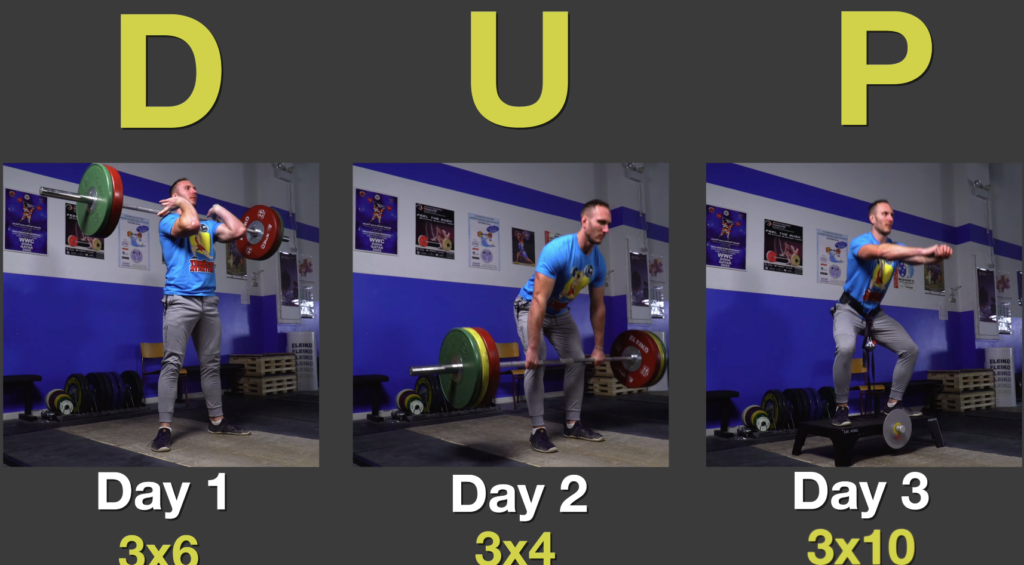
So while hard sets are generally a good focus point, having some variation within the reps through a week, particularly on movements which challenge similar muscles, can be beneficial.
Let’s Summarize
While many people think there is a specific number of reps to do for hypertrophy, when it comes to building muscle, there isn’t a magical rep range.
Being somewhere between 3 and 15 reps is probably ideal.
However, you should pick your rep range to match up to the movement, to allow good technique and repeatability, while getting somewhat close to failure.
It’ll also be beneficial to vary your reps through the week to maximize your stimulus.
Hopefully this helped clarify some points for you and gave you insight into what the best rep range is for building muscle!
If you’d like us to cover other topics in the future, let us know in the comments.
If you need a training program to help you get stronger, fitter, and feel better, check out the programs we offer right here!
Thanks for reading, and if you’d like to watch the video we made on this topic, just go ahead and press play below!


